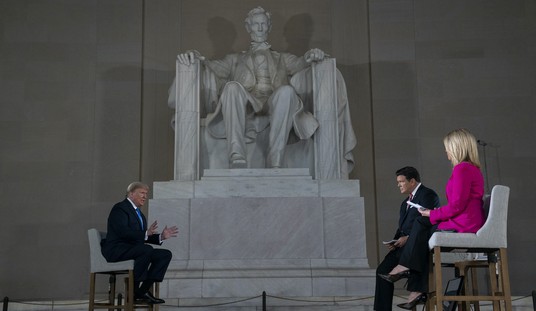By Michael Malone
What is it about tablets?
Apple’s introduction Wednesday of its new iPad — the jokes have already begun about the name and feminine hygiene — was just the latest in what has been one of the most enduring obsessions in high tech history.
I’m not sure exactly why tablets are so appealing. Perhaps it’s because they harken back to the natural human tendency to write and draw on the nearest flat wall or stone or scrap of wood. Or maybe it’s a kind of cultural memory from the days of cuneiform writing on slabs of drying mud, or marking with chalk on a piece of slate in a one room schoolhouse. Whatever the reason, the dream of a smart, interactive tablet is almost as old as electronics itself.
The first time most of us encountered such a smart pad was, as is often the case, in science fiction — in particular, Star Trek and 2001: A Space Odyssey. But even then, some very smart dreamers were already at work on developing the real thing. The best known of these was Alan Kay, who, Zelig-like, seemed to always find himself at the hottest places in tech during the ‘60s, ‘70s and ‘80s. First he was at MIT studying under the legendary Marvin Minsky; then at ARPA at the time it was creating the Internet; then at Xerox PARC when it was creating the operating system that would eventually become both the Apple OS and Microsoft Windows; then at Apple under John Sculley as a company Fellow.
Along the way, Kay first devised, then became obsessed with, and finally became the leading missionary (some would say Pied Piper) for a kind of smart tablet he called the “Dynabook.” Why the Dynabook proved to be such a beguiling notion that it haunted, and still haunts, the electronics industry would be the subject of a great sociology dissertation. Again, I think it has to do with it sitting right at the nexus of what is technologically possible and something deep and elemental in human nature.
Whatever the reason, the Dynabook became a kind of Grail object for the tech world — and it has spent billions of dollars of the last quarter-century in its pursuit . . .with little to show for it.
The first person to wholly surrender to the Dynabook dream was John Sculley, then CEO of Apple Computer after Steve Jobs’ first departure. Sculley was a veteran businessman, but a neophyte to high technology –and was deeply self-conscious about that fact, always feeling that his fellow Silicon Valley executives weren’t taking him seriously. For Sculley, the Dynabook was to be both his homerun product and his legitimization. It would earn for him respect from his peers, earn him at last a reputation for being a tech innovator, and in the process, be his own personal Macintosh — that is, would make the world forget Steve Jobs.
Sculley even paid for the creation of an expensive, Spielbergesque promotional film that offered a vision of what the ultimate Dynabook would be like. It was damn impressive movie — in retrospect, it was an early glimpse of both laptop computers and on-line avatars — but the technology was beyond anything that Apple, or any company of that era, could execute.
And that became obvious when Apple finally did produce its first smart tablet, the Newton. It wasn’t a bad little device, and might have had a future of ever-improved generations, if Steve Jobs hadn’t returned to Apple and killed it. Meanwhile, other companies, notably Palm, were at work creating their own underpowered Dynabooks — and thus, the mid-Nineties saw a wave of Personal Digital Assistants (PDAs) that everybody seemed to own for a couple years, discovered that they were too limited in application and too hard to use (remember the special stylus alphabet?), and eventually abandoned.
But the dream of the Dynabook, the smart tablet, still beckoned. The next major figure that siren call nearly lured onto the rocks was the legendary venture capitalist John Doerr. Just about the time PDA’s began to fade, Doerr invested a fortune in new start-up companies planning to build ‘palmtop’ computers — i.e., Dynabooks by another name. Doerr is often considered the best VC in the world, but even he couldn’t make the idea work . . .and he eventually took his losses and moved on.
Ironically, even as these high risk initiatives were taking place, two older and more conservative industries were slowly inching their way forward to incorporate most of the Dynabook’s features. One was personal computers, which slowly morphed from desktop machines to laptop computers to, over the last couple years, small, but still powerful, ‘netbook’ computers. Converging from the other side was cellular phones, which grew more powerful and added more applications by the year, ultimately peaking with the Apple iPhone and the all of the copycat phones that followed.
Both the netbooks and the smartphones featured many of the features that the Dynabook has promised. Then, from an unexpected direction, came a third technological break-out: the Amazon Kindle. Bezos & Co. had finally managed, for the first time, to build a hugely successful consumer product in a tablet form. Kindle may have been merely a super-duper electronic reader, but it showed that this design had a huge potential market.
All the pieces seemed to be place now for a true milestone product — the equivalent of the HP-35 calculator, Apple II computer and Apple iPod — the Dynabook made real for the Internet/terabyte/3D flat panel world of 2010. And there was only one company that could do it: Apple, which under Steve Jobs had become the most innovative company in tech.
Thus, the Apple iPad, introduced this week with all of the usual hyper-hype and global media coverage of any major new Apple introduction. It is the product (as Jobs told the crowd in SF) of years of hard work by Apple — and, he didn’t need to mention, decades of dreaming about such a product. And then . . .
Well, I began this column by saying that mankind seems to have some deep-seated, almost genetic, desire for tablets to work and play on. What I didn’t say is that we need such a tablet. And there’s the rub. The Apple iPad is a good looking device, with a spectacular display, and apparently very fast processing speeds for applications like video, photos, games, etc. It also seems to be fully compatible with the iPhone and iPod Touch (indeed, it’s like elephantine version of the latter), which opens up that vast library of 100,000 apps that have been created by users over the last couple years. It is also, as with most Apple products, beautifully designed and imperially slim — the kind of thing that makes you feel cooler just holding it in your hand.
Or rather, I should say hands, because the iPad weighs 1.5 pounds. Trying holding a quart of milk in your hand and see how long that’s comfortable. The iPad also lacks multi-tasking (which means it’s not really a computer), a phone (which means it’s not really a smartphone), a camera, USB ports, removable media, removable battery, and a real keyboard. It also has a surprisingly large bezel around the display because, after all, that bigger form factor means you can hold the iPad around the edges like the iPhone, but have to grip it in your increasingly weary hands. And if that’s the case, why not just by a netbook with, you know, an actual keyboard?
That’s not enough to make the iPad a failure, or even just a moderately successful product. As Jobs himself pointed out, there are a 75 million people out there who already use an iPod or iPhone, and enough of them will buy an iPad to make it as success. And yet, as Amazon’s and the various netbook makers’ stock jumped Thursday morning, there is a gnawing feeling out there that the iPad doesn’t come close to living up to the world’s expectations.
That disappointment has characterized every physically real smart tablet since the Newton. And now, it’s even suckered the biggest, smartest fish of all, Steve Jobs. Perhaps in time, he’ll drive Apple to make the iPad all it can be. But just as perhaps, maybe it’s time to let the Dynabook remain the lovely dream it always was.









Join the conversation as a VIP Member